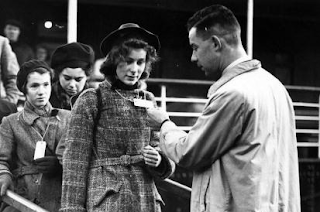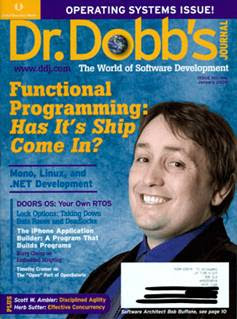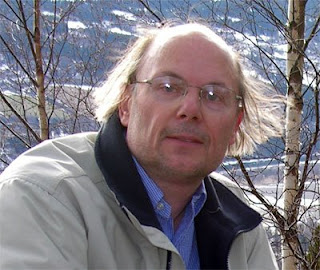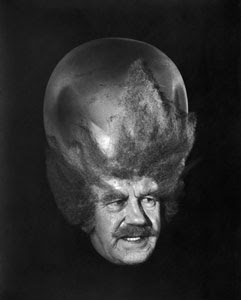 The night of November 9-10, 1938, must have been terrifying beyond comprehension. That’s when the Germans citizens launched Kristallnacht, the night of breaking glass, destroying buildings, property and religious treasures belonging to the frightened Jews of the country.
The night of November 9-10, 1938, must have been terrifying beyond comprehension. That’s when the Germans citizens launched Kristallnacht, the night of breaking glass, destroying buildings, property and religious treasures belonging to the frightened Jews of the country.
My mother-in-law, Rosa Sacharin, was a young girl in Berlin at that time. She escaped the country shortly thereafter on the first Kindertransport on December 1, 1938. In this picture, she’s the girl on the left, wearing a nametag as she comes off the refugee boat in the U.K.
One of the bravest people I know, Rosa has spoken about her experiences in Germany all over the world. You can read stories about her online, such as the Sunday Herald’s “Hitler’s Forgotten Victims,” and The Scotsman’s “Escape from Hell.”
Rosa was asked to speak at an event on the 70th anniversary of Kristallnacht. She has graciously permitted me to publish her remarks here. Even though this is not normally the sort of post that goes onto my blog, my dear Rosa’s remarkable story must be told.
ADDRESS TO KRISTALLNACHT COMMEMORATION SERVICE
Ladies and Gentlemen.
The main purpose of my talk is to discuss the events of Kristallnacht. I was a child then, and did not experience the horrors that many did. My experiences are therefore centred on the day after the event and I will confine myself to that.
However, it is important to know something of the circumstances which led to this event and the willingness of a nation to accept without question the philosophies of the ruling party.
Historians claim that the Kristallnacht served as the prelude to the Final Solution, which was carefully planned. I would question this interpretation and show that the Kristallnacht was opportunistic, rather than planned.
Any change in political orientation involves a process of manipulation and indoctrination of the general population, to make it compliant. This process involves all sections of society and includes the education system from primary right through to higher education, public services, the judiciary, police, industry and religious institutions. Nor did this happen only in Germany during the Nazi period, but was and continues to be a well-established method in all countries.
At school, the day started with the salute to Hitler and immediately followed by the Lord’s Prayer. In German, it was “Heil Hitler, Vater Unser”. Young children thus began to associate Hitler with God. It was, in fact a very subtle way of indoctrinating children.
Jewish children were subjected to comments made by teachers and readily echoed by classmates. One teacher, a member of the blackshirts, made it clear that Jews were not wanted in Germany and should go to Palestine. Another teacher used me to show the class how dishonest Jews are. According to Nazi philosophy, it was impossible for a Jew to do well in any subject, and since I was quite good at some, this did not fit into the National Socialist portrayal of the Jews. I was branded a cheat.
One lesson included a study of the stars, held after school in the evening, when the teacher pointed to one of the shining stars and said, “ Children, see that star, it is the Jew Star, which is responsible for all our misfortunes” There was a gasp from the children and they all turned to look at us.
There were other examples, but it shows how the education system was used to manipulate and indoctrinate. Later on these children would become members of Hitler Youth and BDM (the group for girls) where further indoctrination made them compliant citizens.
It is often said that the Jews in Germany did not want to know or were blind to what was happening. This is not the case. Many Jews recognised the dangers and left Germany. As early as 1932 Recha Freier, a Rabbi’s wife, saw the dangers and decided that there was no future in Germany for young Jewish people. She founded Youth Aliyah, which enabled 14 – 17 year olds to prepare for life in Palestine. There was opposition to her work, but she persisted and many young Jews were saved. Soon after coming to power, Jews were removed from academic and professional posts and left Germany.
1935 saw the enactment of the Nuremberg laws, which led to further discrimination, and disenfranchisement. Over 200 Jewish men were tried as “enemies of the State.” All their Funds were taken. Since their families were left destitute, escape was impossible. This added to the burden of the Jewish Social Services.
The Law created other problems. All Jewish children attending State Schools had to leave, i.e. there was not to be close contact between non-Jewish and Jewish children, who had to find placements in Jewish Schools. Older pupils were able to continue some form of education with ORT (Organisation for Rehabilitation and Training.
Religious life was well established. With a Jewish population in Berlin of about 160,000 it had 14 Community Synagogues, 19 Private Synagogues of which one belonged to the Sephardic community. There were Jewish Schools, Kindergartens, Home and School for the Jewish deaf, a workshop for Jewish blind, a Jewish Hospital, Psychiatric hospital, several Jewish old age homes, Jewish orphanages, and Homes as well as Youth groups. Art and theatres were well supported and during the difficult years, there was support for those in need and preparation for emigration. It can be seen that the Jewish community applied the basic concept of Judaism.
In 1938 when Hitler invaded Austria, Poland worried that Polish Jews would seek safety in Poland. To prevent this, the Polish government issued a warning that those Jews who held Polish nationality, but had not been to Poland in the past 5 years would not be allowed to enter Poland. A date was set for them to comply. The Germans pre-empted this, collected Polish Jews and sent them across the border. Poland did not want them either and the helpless Jews found themselves between two armed camps. Gradually the Polish Jewish community and HIAS-Jewish international help group attempted to ease their plight.
From the beginning of the dispersal, Jews understood the need to respect the norms of the society they joined. While often not welcome, they did not resist persecutions. However, in 1938 a 17year old Jewish youth, whose parents were among those expelled from Germany, unfortunately did act, with dire consequences.
His name was Herschel Grynspan who had gone to Paris to stay with relatives. Whatever his anger led him to do, he did not think things through and certainly did not consider the possible consequences. He bought a revolver, went to the German Embassy where he shot and mortally wounded the 3rd secretary Ernst vom Rath.
This provided the perfect opportunity for Hitler to unleash the hatred for Jews to avenge the death of vom Rath. Throughout Germany, and other areas under Nazi control the main attacks started in the early hours of the morning. Jewish shops were broken into and, contents either destroyed or looted. Many homes were attacked and Jews were killed. Synagogues were set on fire throughout the countries under Nazi control. At the same time the police dragged off 30,000 Jews, mainly men, to concentration camps.
In Berlin, like elsewhere, every Synagogue was set on fire, Torah scrolls desecrated and Synagogues severely damaged, or totally destroyed. The fire brigades were ordered not to extinguish the flames, except when there was danger to adjacent buildings. There was one exception.
The great Synagogue the one I used to attend, was set on fire, but was not destroyed. This was due to the action of one policeman. He ordered the firemen to extinguish the flames. They refused to do so, because their orders, from the government, were not to intervene. The policeman took out his revolver and threatened to shoot them unless they extinguished the flames. Obviously, their lives were more important to them, and they complied. The Synagogue was damaged but remained standing.
While all this was happening I was asleep and totally unaware of the mayhem. The home I was in was near the local police station and I was later told that the police protected us. Others were not so lucky.
In the morning we were told that there had been trouble during the night, but were not given any details. We were told to go to school. I became aware of an eerie silence on the streets. Few people were about, which was most unusual. Nor did we see non-Jewish children going to their schools.
Arriving in the school, we were met by scenes of utter confusion, with very distressed children crying inconsolably, some running about in panic, others sitting sobbing and calling for their parents.
For the teachers present, this was an impossible situation and they had the greatest difficulty calming and comforting them. It was then that I learned what had happened. The fathers of many of them had been arrested, their homes and members of their families had been attacked. I could feel their pain. While I did not experience the horror of that night, I had similar experiences three years previously, when my father was arrested.
There was a stairwell in the school and I saw some of the children, in their distress, trying to throw themselves down that well. It became impossible for the teachers to deal with such distress and their helplessness was obvious. The decision was finally made to send us home and to close the school for the time being.
This created another problem. how to ensure that we got home safely. It was decided 2 children at a time should exit the building at 1-2 minutes intervals. We were told that, on no account, were we to linger, but run home as quickly as possible. Older girls were to look after the younger ones.
I did linger to read the headlines and felt a hand on my shoulder and a voice saying, gently, “This cannot go on”. While I was frightened, it seemed to me then and still does, that he felt ashamed of what had happened
You may wonder what on earth possessed the adults to send us to school? My own impression of that day was and still is, that the adults were in a state of shock, confused and really did not know what to do and how to handle the situation. They may have thought that the school would be a safe place for us to be. I just do not know.
The aftermath of this tragedy affected many families not only as a result of destruction to businesses, but also the imprisonment and subsequent deaths of so many men. There was also an increase in suicides and many children were left without adults to care for them. I also learned that day that my brother had been arrested.
In addition, a collective fine of 1 billion Reichsmark was imposed on the Jews. This made it more difficult to support those in need. Space had to be found for children who were now left on their own. Most of the children’s homes were already full.
There was already an effective organisation established to oversee emigration of children, called, the Kinderauswanderung Amt. It was therefore able and ready to organise any evacuation, which might be set in motion. Rabbi Dr. Leo Baeck, who was the head of the Reichsvertretung der Juden in Deutschland, had been in contact with Otto Schiff in London since 1933. He now sought his help in relieving the pressure of the homes by finding organisations willing to help. This led to the concept and establishment of the Kindertransporte. The fact that a Fund had already been set up in 1933 to help the Jews in Germany meant that organisations already existed which could be approached.
You may have seen the Programme of the Kristallnacht in the Jacob’s Room or perhaps elsewhere. What you saw and heard was broken glass from shops, goods lying in the streets and pictures of the burning Synagogues and desecrated Scrolls.
What you did not see is the effect on people, adults and children. Their loss of loved ones and suffering cannot be measured.
Buildings can be replaced, very few have been, but not the loss of human life. Loss of trust and the ever-present fear of repetition, will be with us for ever.
What then is the lesson of the Kristallnacht? For Jews it is now part of our collective memory, at least, it should be. Is there a lesson for others? I believe so.
Efforts were made in the post –war period to make people aware of the dangers of succumbing to hatred, but today, despite all that has happened, Jew-hatred continues unabated. This poison has no antidote and is gathering momentum, its toxin reaching every world community. Political correctness stifles the rule of law and justice fails to be administered. Racism, the concept of separate human races, further inflames communal strife. Is it not time to recognise and teach that there is only one Human race to which all humans belong, including the Jews?
Are Commemorations not meant to give us the opportunity to reflect on the consequences that hate and contempt for those with differing religions and cultures can and does have? Yet, despite the efforts made by governments and the introduction of National Memorial day as well as teaching programmes in schools, I see no evidence of change in people’s attitude. While we hear some voices saying “Never again” there are others saying, “ It is time to forget”. But if we do not learn from history or distort it then the events we are commemorating today will be repeated again and again.
For Jews, remembering their past is essential for their survival. This is well stated by Simon Wiesenthal, in his book “Chronicle of Jewish suffering” “Every Day a Memorial Day”, where he writes; “There will be Jews as long as they remember”, “There is no greater sin than to forget”.
Z Trek Copyright (c) Alan Zeichick
 Moore’s Law talks about transistor density doubling every 18-24 months. How about every five months — or less?
Moore’s Law talks about transistor density doubling every 18-24 months. How about every five months — or less?








 Among the most peevish of my pet peeves are email messages that have no subject line. Why do people send them?
Among the most peevish of my pet peeves are email messages that have no subject line. Why do people send them?

















